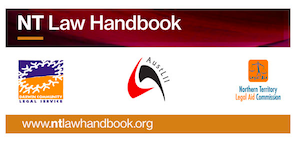-- JonathanMo - 14 Sep 2015
Third, claims must be fairly based on the material provided in the specification to ensure that a wider monopoly than that justified by the specification is not being asked for.
Note the other grounds of invalidity of a patent set out in section 138 of the PA. They include that the patent was obtained by fraud, false suggestion or misrepresentation. This can cover any material deception which results in a patent being granted. This ground could overlap with that of in-utility or insufficiency of description: that is, a patent which does not fulfill its purpose or is insufficiently described may also have been obtained by fraud.
The application process
It can take two years to obtain a patent from the day that an application is filed at the national patent office (the priority date), and sometimes much longer. The Patent Office carries out a search to ensure that the invention really is new and non-obvious. When it is satisfied that this is so, the application is published and an in-depth examination follows. In the case of an invention derived from a natural product, the examination might include the obligation to deposit a specimen. Once the application has been 'accepted' by the Patent Office, but before the patent has been granted, an opportunity must be given to others to oppose the grant on grounds set out in the PA. The validity of the patent may also be challenged, and throughout the 20-year period, renewal fees must be paid annually to keep the patent in force. Note that generally the process will be carried out by patent attorneys, who are not necessarily lawyers, and that lawyers will only become involved where there is some question as to infringement or validity. Patent attorneys are not required to be legal practitioners or to possess law degrees: rather the primary emphasis is on the possession of suitable tertiary qualifications, more often than not in a branch of engineering or science. A provisional or complete patent application can be made by any person including a body corporate [PA s.29]. A 'patent request' is filed first [PA s.29(1)]. A provisional specification must describe the invention [PA s.40], and the specification must comply with requirements of sufficiency of description, lack of ambiguity and fair basis. Note that a 'complete application' must be made within 12 months after filing a provisional application, otherwise the provisional application lapses. The priority date is the date of filing of the provisional application provided the complete application is fairly based on the claims made in the earlier application. If accepted, the applicant should be advised and notice of the decision is to be published in the Official Journal. The complete specification is open to public examination [PA s.49]. Third parties may intervene or object once the complete specification is filed. Patent protection is territorial - a global or universal patent automatically encompassing a number of countries is not available, so patents must be obtained on a country-by-country basis. It may be necessary to file a different application in each country in which protection is sought. However, a number of international agreements, such as the WIPO-administered Patent Cooperation Treaty (PCT), simplify this process by enabling a single application to be prepared which may used to seek protection in countries which are a signatory to the treaty (Australia is a signatory). In the case of the PCT, this application is initially submitted to a receiving office from where it is distributed to national patent offices designated by the applicant. The PCT, however, only applies for a short time during the application stage and national patents still ultimately result.Objections and rejections
'Formal' or 'internal' objections may relate to insufficiency of description. There is no need to relate every detail of the invention if the details could be supplied by a skilled worker: see No-Fume Ltd v Pitchford (1935) 52 RPC 231. On the other hand, see Samuel Taylor Pty Ltd v SA Brush Co Ltd [1950] HCA 44; (1950) 83 CLR 617. Second, an application may be held invalid for ambiguity: see the above-mentioned Elconnex case:the function of the claims is to define clearly and with precision the monopoly claimed ... (but) it is equally clear that it is the duty of the court to endeavour to ascertain from the language used the true meaning of any claim or claims. It is not the function of the court lightly to discard the claims in a specification on the ground that the language used is vague and uncertain.
 Copyright © by the contributing authors. All material on this collaboration platform is the property of the contributing authors.
Copyright © by the contributing authors. All material on this collaboration platform is the property of the contributing authors. Ideas, requests, problems regarding AustLII Communities? Send feedback
This website is using cookies. More info.
That's Fine

